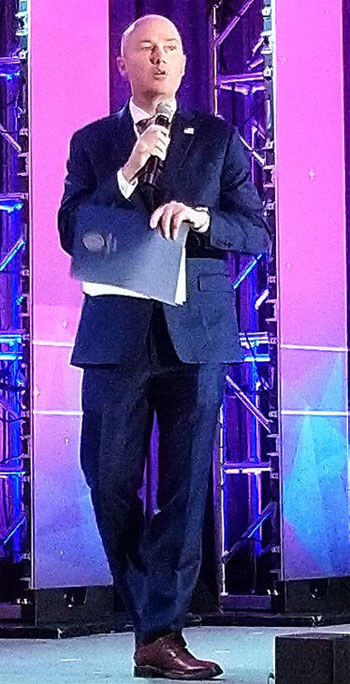Brice Wallace
The state has unveiled — again — its long-term economic plan.
The 10-year plan was approved by the Unified Economic Opportunity Commission at its most recent meeting. Highlights of the plan were included in a slide deck presented in September to a legislative interim committee, but the committee did not discuss the plan.{mprestriction ids="1,3"}
“These are the basic tenets. We’ve discussed this,” Ben Hart, a member of the commission and deputy director of the Governor’s Office of Economic Opportunity, told the commission at its most recent meeting.
“What we’d like to do now is a larger release around this and make sure there is much greater awareness in terms of the tenets of this plan so that it does serve as a coordinating and binding document for us.”
Added Gov. Spencer Cox: “This is something that we worked on, that we approved last year, but we want to approve it for public release this year.”
The overall vision spelled out in the plan is to “create the world’s best economy and quality of life by cultivating prosperity for all Utahns.”
The plan includes eight priorities to achieve that vision: education and talent pipeline, community growth and economic planning alignment, economic opportunity for all, low regulations and taxes, strong targeted industries, “Startup State” branding, rural affairs and international connections. Each priority has listed purposes, actions and metrics.
“Simplistically, in the past, there has been the notion that the economic policy for the state is that it’s all about ‘jobs, jobs, jobs — we’re going to be recruiting businesses here.’ That’s just not who we are today, in 2022,” Hart said. “We feel like the vision ultimately that was developed is very appropriate for where we’re at.”
Education and the talent pipeline is the top priority, he said, because “how we’re getting the next generation ready is our most critical challenge and opportunity as a state.”
Cox and other state officials have talked about the need to narrow state corporate recruitment and expansion efforts to target certain industries — state government currently has eight listed — as a way of growing the state’s economic ecosystem. Large companies in those industries can settle in Utah and entice more to do the same, which “breeds more and more success,” Hart said. Among such “foundational employers” in Utah, he said, are Goldman Sachs, Northrop Grumman and Adobe.
The 10-year plan indicates that Go Utah will review and present its targeted industry plan to its standing legislative committee, and governor and his cabinet during even-numbered years. During odd-numbered years, Go Utah will review all statewide programs.
The plan describes accommodating growth as Utah’s most pressing economic issue for the foreseeable future.
“The way Utah coordinates and manages its growth over the next decade will set a pattern and standard for the next century of economic and community planning,” it says. “In planning for 2030 and beyond, the state’s primary challenge and opportunity will be how Utah leaders harness the inertia of America’s fastest-growing economy without overburdening the state’s communities.”
It also calls for coordinated efforts, with the burden for executing the strategy falling on no one agency or group but rather on “all of those who have a role in supporting Utah’s economy.”
The 10-year economic plan will be updated every year.
“One of the things that we heard time and time again was that this needs to be something that’s living and breathing, so every year we need to take a look at this and update it and make sure that we’re doing what’s right,” Hart said. “We do think it’s something that needs revision time and time again, year after year.”
The economic vision document is accessible at https://issuu.com/go-utah/docs/go-utah-economic-vision-2030.{/mprestriction}








